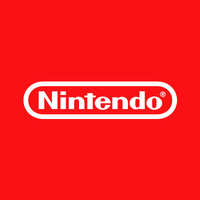Your App Has Launched, Now How Are You Going to Make Money?
by Lindsay Rowntree on 12th Nov 2018 in News


Whether your mobile app is 'just' another extension of your long-owned and monetised media property, or a brand-new, standalone product that you are launching as a new developer, you have a few immediate choices to make – choices that, while not set in stone forever, will chart the course of your app’s life. Writing exclusively for TheGamingEconomy, Ryoksuke Izumi (pictured below), VP - Japan, Korea, SEA, AdColony, outlines the key considerations for monetising your app.
The first is – to be free, or not to be free? Will you make your app free, where it can be downloaded at no cost and offers no in-app purchases? Perhaps a premium app, where users pay to download and use it, or Freemium – the initial install is free, but in-app purchases (IAP) are necessary to use part or all of its features?
If you’ve chosen free or 'freemium', you’re in the vast majority. In the Google Play store, for instance, 95.4% of apps are offered for free. Between the two app stores, that number is a bit lower, but at least three out of four apps are now free. With millions of apps in the stores, that means there are literally millions of free apps available.
As such, choosing to go with Free or Freemium will give you a leg up on the Premium apps, since most users will choose $0 over any price – even one as low as USD$0.99/S$0.98/¥100/etc. You’ll see a higher number of initial installs, but you’re now faced with the subsequent dilemma: how to monetise your app.
Mobile advertising is your best – and really only – solution. While in-app purchases have been highly successful for many app developers, in reality, only a small percentage of users will make an in-app purchase without some sort of reward or free trial. In fact, 98.8% of users will never make an in-app purchase and must be monetised through other means.
Now, when you say, “users must be monetised”, it sounds a bit like we’re taking advantage of unknowing consumers who have downloaded an app for free and are now being attacked with ads so you can make money. That’s not the case at all. Mobile users are not naïve; they understand that there’s no such thing as a free lunch. More than 6-in-10 mobile users (63%) understand that mobile apps need ads to earn money and, therefore, accept advertising, according to IPG Media Lab.
And they’re not just turning a blind eye to those ads or refusing to engage with them completely. If they were, advertisers would not see results, and they would (very) quickly redirect their budgets into other tried-and-true channels, like TV or desktop.

Ryoksuke Izumi, VP - Japan, Korea, SEA, AdColony
That is the exact opposite of what is happening – mobile ad spend is now more than half of all digital, and it is projected to grow at a rate of nearly 15%, compounded annually through 2022, when it will reach 69% of digital ad spend, according to Forrester Research. eMarketer is even more ambitious, noting that it should hit 72% of digital by 2019.
So it’s clear that mobile advertising works. The question now is, how will it work for you?
Fortunately, while static or animated banner ads that are integrated into your app’s UI are still a solid choice, you have other options. You can run native ads, which are more advanced versions of banner or video ads; they integrate more fully into your UI, which makes them less intrusive. In an AdBlock Study by HubSpot, the most 'highly annoying' mobile ads were those that 'pop over my entire screen', completely blocking the experience. These ads, called interstitials, are often displayed between app screens or levels in games. When the user is not given the option to refuse to see the ad, that is when they get most irritated; this is where the risk lies.
How do you avoid this? Sure, there are those Xs on rich media ads where users can close the ad, but in many cases, the damage has already been done, doubly so if those close buttons don’t appear immediately.
This is where rewarded video comes in. Sometimes referred to as 'user-initiated' or 'V4VC'. It is first important to note that video as a general format is one of the reasons why the mobile ad market is taking off like it is. Video, once pigeonholed as a '30-second spot', has now been effectively reduced to compelling six- or seven-second stories! This is conveniently in alignment with what many now consider the average human attention span (8 seconds).
Also, the increasing of smartphone screen size and new emerging tech – like 360-degree video, virtual reality, and augmented reality – creates new video-viewing experiences. The medium is only getting more convenient and interesting to consumers.
Traditional, full-screen in-stream video ads on their own, though, can still be on that consumer blacklist of 'ads I don’t like'. Enter rewarded video. You, as a developer, incentivise your user to take the action of watching the ad by offering a reward, typically in the form of an upgrade within the game, virtual currency, access to gated content, or a product discount.
Rewarded video works, and not just for one KPI. It boosts customer sentiment about your app because you’re providing real, quantifiable value in exchange for their action. They deliver up to 20x higher performance when it comes to engagement metrics, as well as user retention metrics – so you’re not just making money off of your existing users, you’re causing them to stick around for longer, too.
Lastly, rewarded video will increase your revenue by boosting another revenue stream: your IAP! Users who had previously never made an in-app purchase were 4x more likely to make a purchase after engaging with rewarded videos, according to platform data across both app stores.







Follow TheGamingEconomy